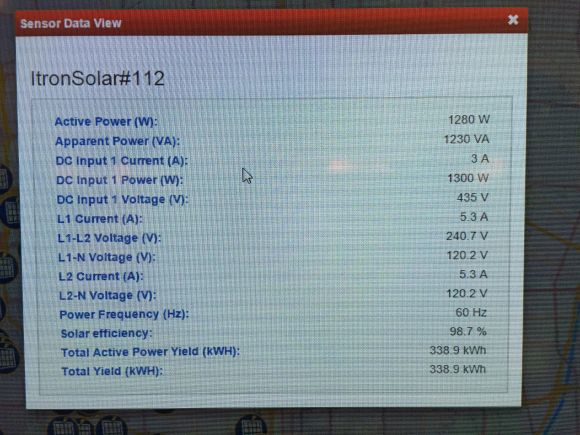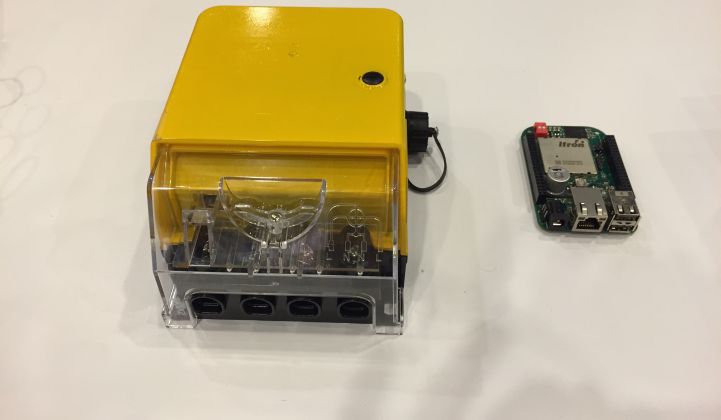For the past year or so, smart-meter maker Itron and partner Cisco have been working on a transformative concept for the grid edge -- a single, standards-based platform that can connect everything from Linux-enabled grid routers and smart meters to simple, battery-powered sensors, and a myriad of devices in between.
The idea behind Itron’s Riva platform is to bring the same level of flexibility to grid-edge devices as smartphones have brought to the world of mobile connectivity. Instead of devices linked by proprietary networks and fixed with a set number of functions, Itron and Cisco want each endpoint to support a growing number of applications, including those that haven’t even been envisioned yet.
It’s not a unique concept in the utility world. The falling cost of computing power and wireless connectivity have allowed smart meter and grid vendors to turn out devices with capabilities that, only a half-decade ago, would have been prohibitively expensive and required years of development time.
But how are these capabilities being expressed in real-world products? Last week’s Itron Utility Week conference in Los Angeles gave the industry a chance to catch up on what the company has in the works, both in the near term and further down the line.
One of Itron’s less-well-known but fastest-growing lines of business is its solar monitoring business. Itron now holds roughly one-third of U.S. market share in monitoring and reporting data on the output and performance of rooftop PV systems for customers including Sunrun and Clean Power Finance. Big competitors include recently acquired startup Locus Energy, as well as do-it-yourself solutions from contenders like SolarCity and Enphase, which typically use customers’ broadband internet connections to communicate to the outside world.
To date, Itron’s solar meters have used cellular communications to transmit PV data in 15-minute increments. But as we’ve noted in previous coverage, they’ve lacked direct access to solar inverters for more fine-grained performance data, and don't have broadband internet connections to pull more data about building energy systems and how they relate to solar production.
Itron’s new Riva-equipped Solar Gateway devices are meant to fix these problems. “This is the evolution of Itron’s solar solutions,” Roberto Aiello, head of Itron’s New Business Innovation team, said during a demo of the yet-to-be-released product. “In our interviews with customers, we discovered they want to connect to the meter and to the devices in the home,” he said.
So Itron’s new solar gateway devices include broadband connections, direct inverter access, a ZigBee radio to pull real-time energy data from smart meters, and Wi-Fi connectivity to smart thermostats and other on-premise energy monitoring and control devices.

This suite of capabilities is managed as a service by Itron, working closely with its solar partners, he said. To allow further customization of the gateway’s capabilities, Itron is making its core computing platform open to its solar partners, as part of its Riva Developers Community effort, launched in May of this year.
This computing platform is built on an ARM Cortex-A8 processor core, the same core used by the original iPhone, and the same Linux-based platform that enables Itron’s latest Riva-enabled smart meters and partner devices like Cisco’s connected grid routers, Elena Vasconi, from Itron’s new business team, noted.
One of the first applications its solar partners are interested in is advanced panel performance diagnostics, she said. That task could be made more accurate and useful with access to multiple streams of energy data from solar-equipped buildings, as well as through access to the cloud-based data analytics available to a gateway that’s in more or less real-time connection to the internet via broadband connections. Here's a screenshot of the kind of data that Itron's solar gateway can deliver, from what appears to be a pilot deployment in Southern California, based on the system map on display at the demonstration.

Smart inverter integration is also on Itron’s solar gateway roadmap, Aiello said. The Liberty Lake, Wash.-based company has already been embedding Riva capabilities in inverters, at least at demonstration scale, as last year’s DistribuTECH demonstration with inverter partner Fronius indicates.
But the Solar Gateway fits squarely within Itron’s existing business of providing a third-party solution to solar monitoring, without having to rely on any specific inverter maker pushing the technology to market, he said. “Some inverters may be smart, but they don’t have the software to be smart,” he said. “Our value proposition is to provide a common system, independent of the inverter.”
Smart inverters are just beginning to be tested in real-world environments, in advance of mandates to bring them to market in bellwether states like California and Hawaii. Itron’s solar gateway could serve as the central data collection and communications hub for such efforts, and beyond that, “We can control the inverter if we want to,” Aiello said.
The solar gateway hasn’t yet been released as a commercial product -- last week’s demonstration was a prelaunch coming-out party of sorts for the technology. Itron is planning to bring it to market some time next year, but the core computing platform is already on its way to solar partners to develop applications on, he said.
This is one of about a dozen different projects that Itron’s new business innovations team is working on to take advantage of the Riva platform’s flexibility, he added. The solar gateway is an example of a project that has short-term business applications.
Others may be closer to or further away from commercialization, whether as part of existing Itron business lines, or as part of a broader push into the internet of things. The technology is ready to serve, he said. ”What we all need to figure out now is how to make money.”



